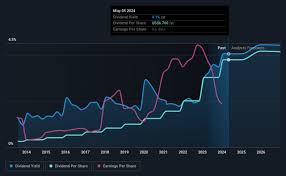Data centres are a serious threat to Ireland's carbon budgets

Humanity’s knack for finding new ways to consume energy is not showing any sign of abating. Take cryptocurrency: a single bitcoin transaction can consume more electricity than a US household does in a month. Or artificial intelligence: a query on ChatGPT uses 10 times more electricity than a Google search, and shifting all internet queries to using AI could consume as much electricity as Ireland does in a year.
Until recently, electricity consumption from data centres accounted for only about 1 per cent of electricity demand globally: energy demand from the explosion in computing, cloud storage, streaming, video calls and so on have been offset by efficiency gains.
But this landscape has shifted recently with the prevalence of AI and cryptocurrency, and the International Energy Agency (IEA) projects that data centres will drive significant electricity growth.
This poses a serious challenge. Growing energy demand at a time when we’re trying to drastically cut emissions is like running down an upwards-moving escalator. Ireland is facing this pressure more acutely than most other countries: 18 per cent of our electricity was consumed by data centres in 2022, as much as all urban homes, making the country an outlier. The country with the next highest share of electricity consumed by data centres is the Netherlands, with 5 per cent, and the figure stands at only about 2 per cent across Europe.
Data centres are by far the largest source of Ireland’s energy demand growth. As a result of this trend, the IEA projects that Ireland’s electricity demand will grow faster than all other countries in Europe over the coming years, and as a result, natural gas demand – and consequently greenhouse gas emissions from power generation – will barely fall, despite significant new renewable power.
This expansion presents a big threat to delivering our legally binding carbon budgets. Lots of new renewable energy – wind turbines and solar panels – is needed to replace polluting fossil fuels. If Ireland’s target was just to deploy more renewables then growing demand would not cause a problem.
[ Ryan and Coveney in heated row over data centres ]
Many data centres are signing power purchase agreements with renewable energy companies, and have been seen as an enabler of wind and solar. But Ireland’s climate law is based on binding carbon budgets, not renewable energy, and because a lot of new renewable energy capacity is serving new sources of energy demand for data centres, rather than replacing fossil fuels for heating and transport, emissions are remaining stubbornly high. We are running just to stand still.
The electricity sector is projected to overshoot its sectoral emissions ceiling this decade by 12 million tonnes of carbon dioxide. Growth in electricity demand from data centres could cause seven million tonnes of additional emissions in that time frame, according to Dr Paul Deane, a substantial share of this overshoot. Moreover, this is just from the growth in electricity demand from data centres that already have a connection agreement: many more are seeking connections.
But the climate impact of data centres could be significantly worse than this. Because of the huge strain data centres are placing on power grids, EirGrid placed a de facto moratorium on new connections around Dublin, causing many to seek a connection to the natural gas network to generate electricity on-site.
New fossil fuel connections like this is absolutely out of line with carbon budgets, as pointed out by Minister for the Environment Eamon Ryan in a letter to Gas Networks Ireland. However, the gas network operator has reportedly said it is contractually obliged to connect data centres, demonstrating a contradiction between their remit and the climate law that needs to be resolved quickly.
[ Data centres to consume one third of State’s electricity by 2026 ]
Allowing unchecked data centre growth will also seem unfair to other sectors of society required to make deep changes to cut emissions, particularly farmers and motorists, and could undermine support for climate action and for new renewable energy projects.
The proponents of data centres have argued they have to be located somewhere, so it might as well be Ireland, where the climate is suitable. But this overlooks the fact that Ireland’s electricity is not particularly clean, by European standards. Sweden’s electricity, for example, is fully decarbonised, and the country has shut down nuclear power plants because of oversupply.
The challenge data centres post for Ireland’s climate targets underscores the broader issue of living within limits. This doesn’t just mean balancing economic growth with environmental sustainability: carbon budgets should be an acknowledgment that there are physical limits to consumption within safe planetary boundaries. This conversation, unfortunately, is still in its infancy.
Hannah Daly is professor of sustainable energy at University College Cork


 United Kingdom
United Kingdom Argentina
Argentina  Australia
Australia  Austria
Austria  Brazil
Brazil  Canada
Canada  Germany
Germany  Ireland
Ireland  Italy
Italy  Malaysia
Malaysia  Mexico
Mexico  New Zealand
New Zealand  Poland
Poland  South Africa
South Africa  United States
United States 
























